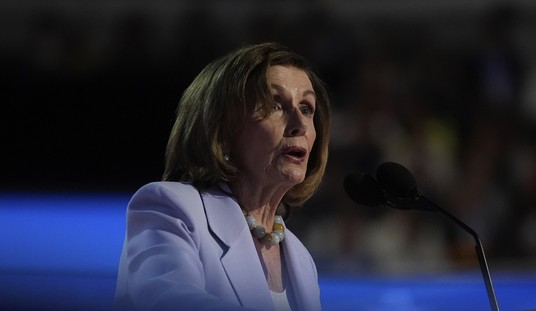A British financial writer came under fire for being homophobic after Tweeting in response to a discussion of the UK’s Debt Management Office that “without its prudence, we might all be in Queer Street or Skid Row by now.” The phrase Queer Street was taken by some to be a homophobic slur.
The journalist, Robert Peston, defended himself by citing the dictionary. According to Wikipedia, the phrase “Queer Street” is “a colloquial term referring to a person being in some difficulty, most commonly financial. It is often associated with Carey Street, where London’s bankruptcy courts were once located.” Previous generations of British writers have been able to use the phrase without being accused of bigotry, including Charles Dickens, Arthur Conan Doyle and many others.
Charles Dickens wrote a chapter in Our Mutual Friend (1864) called “Lodgers in Queer Street” about a corrupt moneylender plotting to bankrupt his “friends” because they outshine him socially.
In The Great God Pan (1894) by Arthur Machen; Villiers speaking to Austin about his attempt to uncover the original identity of a “Mrs. Beaumont” stated: “If you see mud at the top of a stream, you may be sure that it was once at the bottom. I went to the bottom. I have always been fond of diving into Queer Street for my amusement, and I found my knowledge of that locality and its inhabitants very useful.”
In the Sherlock Holmes story The Second Stain (1904) Inspector Lestrade chastises a constable, “It’s lucky for you, my man, that nothing is missing, or you would find yourself in Queer Street.”
In Brideshead Revisited (1945) Edward Ryder, commenting on his son Charles’ difficult financial situation, remarks dryly, “Hard up? Penurious? Distressed? Embarrassed? Stoney broke? On the rocks? In Queer Street?” – Your cousin Melchior was imprudent with his investments and got into a very queer street – worked his passage to Australia before the mast.”
Perhaps even then fewer people than today understood the phrase. The difference is that in the day of Dickens and Doyle there were not as many interest groups willing to take umbrage at the drop of a hat.
For some it is how a particular word is understood, not how it is meant nor even what it means that is important. In 1999 for example, “a white aide to Anthony A. Williams, the black mayor of Washington, D.C., used “niggardly” in reference to a budget. This apparently upset one of his black colleagues (identified by Howard as Marshall Brown), who interpreted it as a racial slur and lodged a complaint. As a result, on January 25 Howard tendered his resignation, and Williams accepted it.”
Shortly after the Washington incident, another controversy erupted over the use of the word at the University of Wisconsin–Madison. At a February meeting of the Faculty Senate, a junior English major and vice chairwoman of the Black Student Union told the group how a professor teaching Chaucer had used the word niggardly. She later said she was unaware of the related Washington, D.C. controversy that came to light just the week before. She said the professor continued to use the word even after she told him that she was offended. “I was in tears, shaking,” she told the faculty. “It’s not up to the rest of the class to decide whether my feelings are valid.” …
In late January or early February 2002, a white fourth-grade teacher in Wilmington, North Carolina was formally reprimanded for teaching the word and told to attend sensitivity training.[7] The teacher, Stephanie Bell, said she used “niggardly” during a discussion about literary characters. Parent Akwana Walker, who is black, protested the use of the word, saying it offended her because it sounds similar to a racial slur.
Are these controversies simply the result of ignorance preying on paranoia? Or is there a genuine case to be made for proscribing or discouraging the use of perfectly legitimate symbols which have become tainted by association with controversial or notorious causes?
Consider the swastika. It is an ancient oriental symbol, holy in several religions which completely predates Nazism by tens of centuries.
The swastika (Sanskrit: स्वस्तिक) is an equilateral cross with its arms bent at right angles, in either right-facing (卐) form or its mirrored left-facing (卍) form. Earliest archaeological evidence of swastika-shaped ornaments dates back to the Indus Valley Civilization of Ancient India as well as Classical Antiquity. Swastikas have also been used in other various ancient civilizations around the world. It remains widely used in Indian religions, specifically in Hinduism, Buddhism and Jainism, primarily as a sacred symbol of good luck. The swastika is also a Chinese character used in East Asia representing eternity and Buddhism.
It’s legitimate, so why not display it? But one would not be surprised if a tourist were startled by the sight of this Buddhist structure in Korea, though he would do well to ask himself what the survivors of the Third Reich would be doing there.
Just as popular culture has a way of convincing us that historical figures looked like Hollywood stars it has a way of magnifying some images at the expense of others. When popular culture associates a word or symbol with something it is almost impossible to return the sense to the original.
Recently an ice cream vendor was mistaken for being a member of the Ku Klux Klan for walking outside his shop in an ice-cream cone outfit. All he was doing was drumming up business for his shop. But to some, the outfit resembled the sinister hooded costumes of the KKK. The man didn’t even know people were thinking this. In his defense the ice-cream man retorted that his outfit had “sprinkles”, an embellishment rarely seen in the real thing.
The best remedy for these comedies of error is probably dialog. Most reasonable individuals would no longer take offense, even laugh, once they understood that all the man was trying to do was sell ice-cream. But in our politically correct world, where it is customary to sue or complain first and ask questions later, that is a step that is often omitted.
Storming the Castle at Amazon Kindle for $3.99
No Way In at Amazon Kindle $3.99, print $9.99
Tip Jar or Subscribe for $5












Join the conversation as a VIP Member